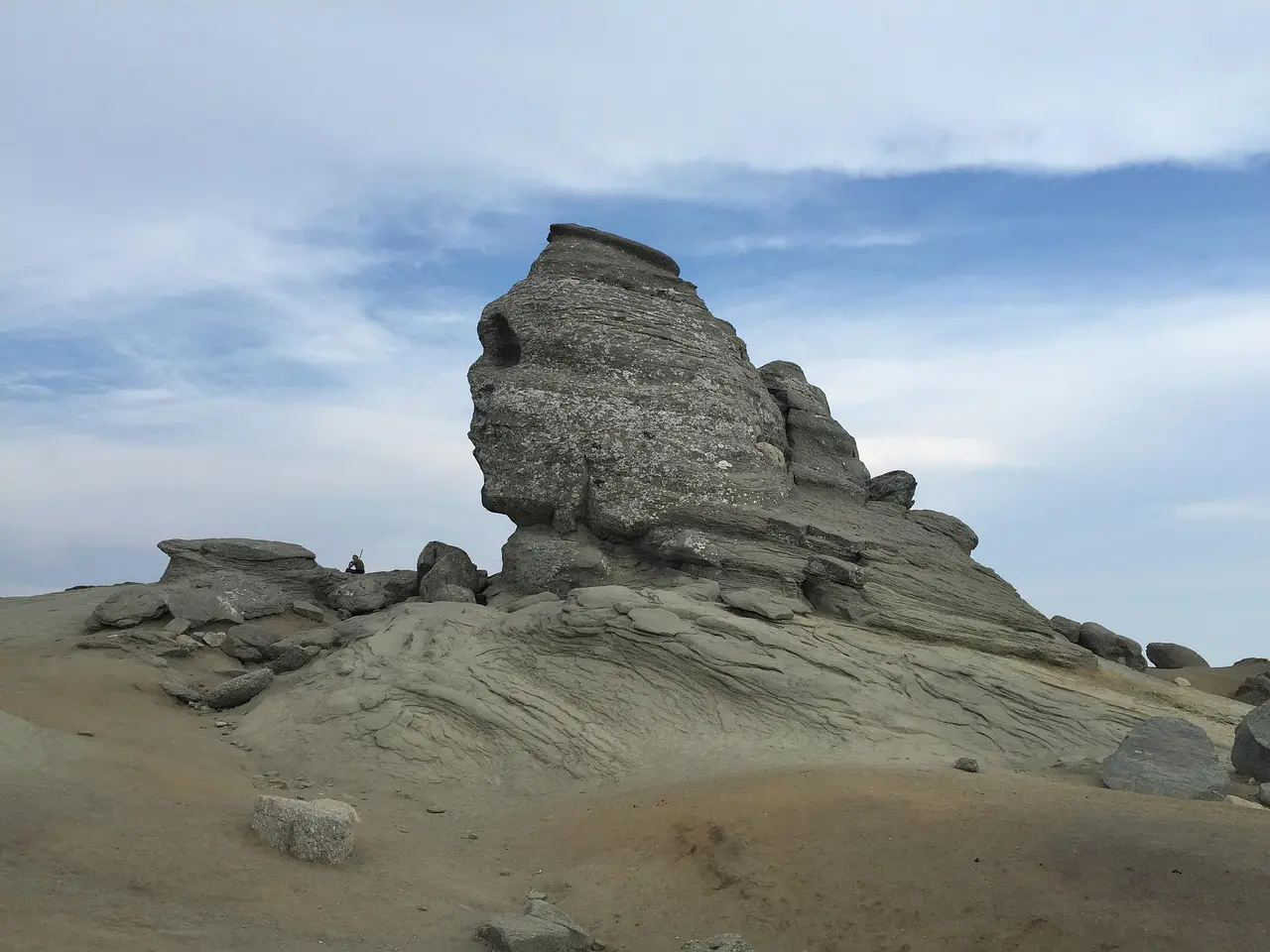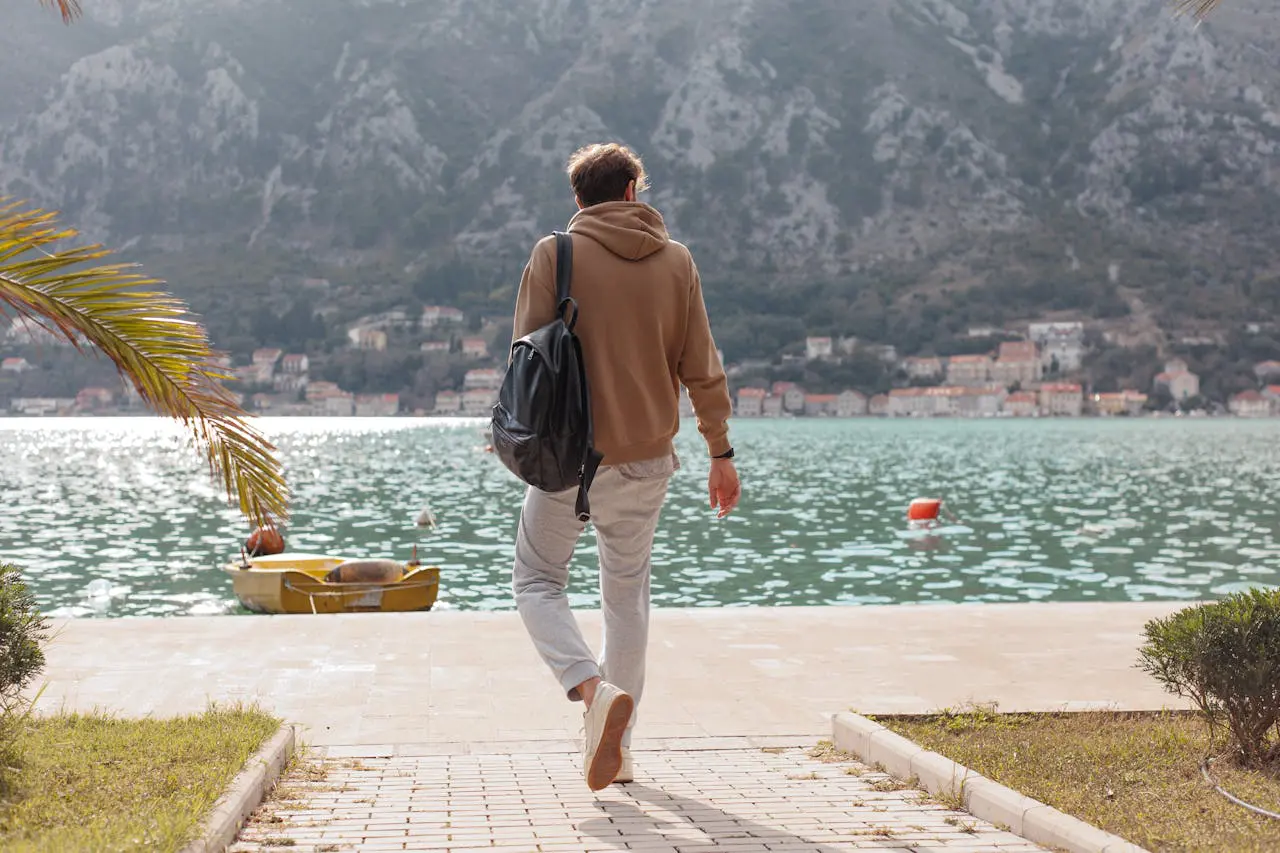Travel in 2026 isn’t just evolving – it’s transforming. I’ve spent a lot of time reading through industry trend reports from Hilton, Skyscanner, The Portugal News, Explore Worldwide, Travel Agent Central, SmartFlyer, and others. And it’s fascinating how aligned they are.
Despite covering different regions and traveler demographics, they all point toward the same transformation: travel in 2026 is driven by emotion, identity, connection, meaning, and conscious choice.
2026 is the year we stop traveling for the sake of going somewhere – and start traveling for meaning, identity, and connection.
Travel in 2026 feels different. Not rushed. Not performative. Not built around checklists or Instagram moments. This year, travel feels deeply personal – almost like the world collectively exhaled and whispered:
“Why am I traveling in the first place?”
And honestly? I feel this shift myself.
Over the years, especially as I’ve written more about travel and reflected on the reasons behind my own journeys, I’ve noticed how much more intentional my trips have become. I no longer want to “see everything.” I want to feel something. And it turns out – so does everyone else.
Let’s explore the most powerful travel trends shaping 2026, how they intertwine, and what they mean for the way we choose our next destination.
The 2026 Travel Trends Everyone Is Talking About
Why-Cations: The Biggest Travel Trend of 2026 (And One That Resonates Deeply With Modern Travelers)
Hilton calls it the rise of the “why-cation” – a beautiful term that perfectly captures the spirit of 2026.
Instead of planning a trip around where to go, travelers now start by asking:
“Why am I going?”
Maybe it’s to reset mentally or emotionally.
Maybe it’s to reconnect with family.
Maybe it’s to reconnect with who we used to be – or who we want to become.
Maybe it’s to get clarity after a chaotic year.
Or to feel something they haven’t felt in a long time.
In a way, why-cations are antidotes to the “busy vacation” – the tightly packed itineraries where people sprint between attractions, collect stamps in their passport, and return home more exhausted than they left.
2026 is the year people stop chasing more and start chasing meaning.
Travel with intention, not exhaustion
A why-cation doesn’t have to be grand or expensive. It can be:
- A weekend in nature because your mind needs silence
- A city break because you crave creative inspiration
- A long-delayed reunion trip because you miss your people
- A spiritual or wellness retreat, because life feels heavy
- A slow coastal holiday because the sea heals you
When intention becomes the compass, the destination becomes infinitely more rewarding.
As Hilton put it, travelers in 2026 want trips that help them feel like themselves again.
And honestly? I think that might be the most beautiful travel motivation yet.
Nostalgic Travel Is Back – And I Realised I’ve Been Doing This for Years

I have to admit something:
When I first saw nostalgic travel listed as a major 2026 travel trend in The Portugal News, I was surprised. And then, immediately afterward, I laughed – because I realised I have been doing this for years without ever naming it.
Over time, I’ve found myself returning to places I visited as a child with my mother. Sometimes deliberately, sometimes almost unconsciously. There is something powerful about walking through streets your younger self once knew – the scent of the sea, the familiar shape of mountains on the horizon, the quiet comfort of “I’ve been here before and it meant something.”
Nostalgic travel is warm.
It’s grounding.
It’s healing in ways you don’t expect.
Why nostalgic travel is booming in 2026
According to The Portugal News, people are craving:
- The emotional safety of familiar places
- Retro experiences that feel simpler and calmer
- Destinations tied to childhood memories
- The joy of rediscovery
- Classic attractions (think seaside towns, old-school theme parks, vintage cafés)
In a world that feels fast, unpredictable, and digital, nostalgia has become a comforting anchor – a way to reconnect with the parts of ourselves we sometimes lose as adults.
And it’s not just personal nostalgia.
Cultural nostalgia is rising too: retro hotels, analog photography tours, vintage train journeys, and even 90s-inspired travel itineraries.
I smile, thinking the trips I’ve taken “for memory’s sake” are now one of the biggest trends of 2026.
Transformational Travel: Trips Designed to Change You
If nostalgic travel helps you reconnect with your past, transformational travel is all about reinventing your future.
This trend isn’t new – but in 2026, SmartFlyer reports it’s accelerating fast, crossing into mainstream travel behavior. More travelers are seeking trips that offer:
- Emotional reset
- Spiritual connection
- Physical challenge
- Creative exploration
- Deep learning
- Personal evolution
What transformational travel looks like in 2026
It can be:
- A long-distance hike in nature
- A meditation or yoga retreat
- A photography camp
- A writing workshop in a quiet village
- A volunteer experience
- A long stay abroad to break the routine
- A sabbatical that finally creates space to breathe
What matters is not what you do, but how the experience changes you.
Travel becomes a bridge between who you are today and who you want to be next.
Astro-Tourism: 2026’s Most Magical Nature Trend
Astro-tourism is captivating travelers of all ages, and 2026 is full of cosmic events worth traveling for. With light pollution increasing across the world, dark-sky destinations feel like sacred spaces.
And I have done this – and plan more trips too.
I have travelled (ok, close to home) to see lunar eclipses, the Perseids, or the Milky Way in all its splendor (it was an unforgettable night).
People are now choosing destinations specifically for:
- Meteor showers (told you I love them too!)
- Dark-sky parks
- Aurora hunting (on my bucket-list!)
- Telescope lodges
- Astronomy retreats
- Solar eclipse viewing trips
These experiences pair perfectly with the why-cation trend – they encourage wonder, reflection, silence, and connection with something larger than ourselves.
And they’re incredibly photogenic too.
Solo Travel Reaches New Heights in 2026
Solo travel isn’t just popular – it’s thriving. (and for a while now!)
More women than ever are traveling alone, and more men are choosing solo adventures to get clarity and peace.
What’s fueling this trend?
Confidence, flexible work, digital tools, and a desire to learn who we are outside our daily roles.
Hotels and tour companies are responding with:
- Solo-friendly room packages
- “Meet other travelers” community apps
- Group tours designed for individual travelers
- Adults-only retreats
In a world of constant noise, solo travel has become a sanctuary.
Community-Based Travel: Cultural Immersion Over Checklists
This is one of the most heartwarming shifts of 2026: travelers genuinely want to connect.
Not to observe from afar.
Not to photograph from behind a crowd.
But to participate – respectfully, meaningfully, and with curiosity.
Community-based travel comes in many forms:
- Cooking with local families
- Learning crafts from artisans
- Staying in family-run guesthouses
- Joining community festivals
- Supporting local cooperatives
- Exploring with residents, not guidebooks
Travel becomes storytelling.
Shared meals.
New friendships.
New perspectives.
This trend is a beautiful antidote to the “rush-and-repeat” travel style that dominated the last decade.
Escaping Overtourism: Hidden Gems, Second Cities & The Rise of “Elsewhere Travel”
Travelers in 2026 are actively choosing lesser-known places to avoid the overwhelming crowds of hotspots like Venice, Santorini, or major capitals overwhelmed by tourism.
According to multiple reports (Skyscanner, cited above, Explore Worldwide, Trafalgar), travelers are gravitating toward:
- Second cities (Bologna instead of Florence, Girona instead of Barcelona) – I already presented you the Townsizing trend
- Hidden-gem towns
- Off-season or shoulder-season travel
- Rural escapes
- National parks
- Small coastal villages
Altitude Shift: Mountains Are the New Summer Getaway
Skyscanner’s data revealed something striking:
76% of global travelers are considering or planning a mountain escape in summer/autumn 2026.
People want cool air, panoramic views, long hikes, wellness in nature, and destinations where you can breathe freely.
The mountains have always been beautiful.
In 2026, they will become essential.
Film Tourism (“Set-Jetting”) Remains a Global Obsession
From Game of Thrones to Emily in Paris to The Witcher, movies and series continue to drive travel choices in 2026, according to Explore Worldwide.
People want to visit the worlds they fell in love with on screen – and this trend is wonderfully evergreen.
Every new blockbuster creates a new travel wave.
Slow Travel, Rail Journeys & Traveling At Human Speed
In 2026, the idea of “the more you see, the better the trip” finally loses power.
Slow travel is replacing it (Explore Worldwide).
This year, travelers crave:
- Longer stays
- Fewer destinations per trip
- Walking itineraries
- Village-to-village exploring
- Train journeys
- Nature immersion
- Time to breathe and notice
The rail revival is unmistakable – night trains in Europe, scenic routes across the Americas, panoramic train journeys in Asia. Trains offer that sweet combination of comfort, sustainability, and nostalgia.
Slow travel is not just a trend – it’s a lifestyle shift.
AI-Powered Travel Planning: Personalized Without Losing the Human Touch
AI is transforming travel – not by replacing the experience, but by shaping the preparation (Trafalgar).
People now rely on AI for:
- Itinerary suggestions
- Destination comparison
- Translation
- Mapping
- Personalized recommendations
- Finding hidden gems
- Budget planning
And yet, the actual experience remains beautifully human.
AI clears the logistical clutter.
Travelers fill the journey with meaning.
Changing Stays: Hotel-Hopping, Upcycled Spaces & Experience Stays
Accommodation in 2026 is no longer just a place to sleep – it’s part of the adventure.
According to trend reports (The Sun), travelers are increasingly choosing:
- Hotel Hopping – staying in multiple hotels within one destination
- Salvaged Stays – upcycled spaces like converted train stations, factories, or schools
- Experience Stays – hotels with immersive activities, workshops, or local integration
- Wellness retreats
- Multi-gen villas
People want accommodation that reflects their values, interests, and travel purpose.
Multi-Generational & Milestone Travel: Shared Travel, Shared Memories
Another strong trend for 2026 (I have seen it in 2025, too) is multigenerational and milestone travel.
Families are traveling together more, and for deeper reasons:
- Reunions after years apart
- Anniversaries
- Graduation trips
- “Before college” vacations
- “Introducing the kids to our roots” journeys
- Big birthdays
These trips are both nostalgic and forward-looking – echoing two of the biggest emotional trends of the year.
Luxury Reimagined: Quiet, Intentional, Personal
Luxury used to mean extravagance.
In 2026, it means experience, according to SmartFlyer.
Quiet luxury.
Private moments.
Tailored itineraries.
Meaningful experiences.
Highly personalized service.
Nature-based escapes.
Cultural immersion – and a strong sense of identity.
This version of luxury is more sustainable, more thoughtful, and far more aligned with the emotional needs of modern travelers.
I completely find myself here!
Sustainable & Regenerative Travel: From Buzzword to Behavior
People are becoming more conscious of the impact of their choices – environmental, cultural, and economic.
This includes:
- Choosing lesser-visited destinations
- Traveling in shoulder seasons
- Supporting local businesses
- Reducing footprint
- Staying longer in one place
- Being mindful of cultural sensitivity
Sustainability in 2026 is practical, not performative.
So What Are the Travel Trends for 2026?
The biggest travel trends of 2026 include why-cations (purpose-driven trips), nostalgic travel, transformational travel, astro-tourism, solo travel, community-based experiences, hidden-gem destinations, slow travel, AI-powered planning, unique stays, multigenerational trips, quiet luxury, and regenerative tourism. These trends reflect travelers’ desire for more meaningful, intentional, identity-driven experiences.
My Top Picks If You Want to Try a 2026 Travel Trend
If you’re not sure where to start, here are a few ideas based on what 2026 travelers are loving – and what I’ve found to be the most rewarding choices:
• For clarity: choose a quiet mountain why-cation where you can breathe, think, journal, or simply sit with your thoughts.
Mountains are becoming a global favorite for a reason – they offer perspective in every sense.
• For joy: revisit a place from your childhood or a destination tied to happy memories.
I’ve done this myself many times, and it’s surprisingly healing to walk through places your younger self once loved.
• For depth: try a transformational experience – a retreat, a creative workshop, a long-distance hike, or even a sabbatical-style trip.
These journeys stay with you long after you return home.
• For wonder: plan a short astro-tourism getaway.
A dark-sky weekend, meteor shower, or aurora-viewing trip can shift your whole perspective (and they’re perfect for slow, reflective travel).
• For crowd-free beauty: visit a second city or a hidden-gem rural region instead of the usual hotspots.
You’ll get authenticity, local flavor, and space to actually enjoy your trip.
• For sustainability: stay longer and travel slower – fewer destinations, more immersion.
It’s kinder to the planet and significantly more enriching for you as a traveler.
What’s Coming After 2026?
While 2026 marks a turning point toward meaningful, intentional, emotionally driven travel, the years that follow will push these ideas even further. Between 2027 and 2030, expect to see hyper-personalized trips powered by AI travel concierges that learn your preferences over time, as well as climate-smart travel windows, where people choose destinations based on environmental conditions and seasonal sustainability.
Rail and small-ship travel will continue their revival as slower, planet-friendly alternatives, while regenerative tourism – travel that actively improves local communities and environments – grows from niche to mainstream.
Short, purposeful micro-trips will also rise, giving travelers quick emotional resets without the rush or the footprint of traditional holidays.
Travel isn’t just changing in 2026 – it’s evolving toward a future where every journey is more thoughtful, more personal, and more aligned with how we want to live.
What These 2026 Travel Trends Mean for You
Travel in 2026 invites us to travel slower, deeper, and more intentionally.
Whether you’re planning a big adventure or a quiet escape, consider starting with your why.
Then choose a destination that aligns with your emotional needs, your values, and your sense of curiosity.
Look for hidden gems.
Try staying longer.
Let yourself wander.
Reconnect with your younger self – or your future one.
Try a nostalgic trip.
Try a transformational one.
Allow travel to be a mirror and a guide.
2026 is the year travel becomes personal again.
And I believe this is the most meaningful shift of all.
FAQ: Travel Trends 2026
What is the biggest travel trend of 2026?
The biggest travel trend of 2026 is the rise of why-cations – purpose-driven trips that start with why you travel rather than where you travel. People are choosing destinations that support emotional well-being, personal meaning, family connection, clarity, and identity. Why-cations reflect a shift toward slow, intentional, deeply personal travel.
Why is nostalgic travel so popular in 2026?
Nostalgic travel is booming in 2026 because people crave emotional comfort and familiarity in an increasingly fast and unpredictable world. Travelers are returning to childhood destinations, classic seaside towns, retro hotels, and experiences that feel calm, simple, and emotionally grounding. Nostalgia also offers a sense of continuity and belonging – something many travelers say they’ve been missing.
Is slow travel still trending in 2026?
Yes. Slow travel continues to grow rapidly in 2026 as travelers prioritize depth over speed and meaning over checklists. Longer stays, fewer destinations, scenic rail journeys, walking routes, and nature immersion are increasingly popular. This trend aligns with sustainability goals and the desire to reduce travel fatigue in favor of richer, more mindful experiences.
What destinations are popular for 2026 travel trends?
The most popular destinations for 2026 include mountain escapes, second cities, and hidden-gem towns that offer beauty without crowds. Travelers are choosing places like Bologna instead of Florence, Girona instead of Barcelona, smaller coastal villages, national parks, and rural regions. Mountain destinations in particular are surging. Skyscanner reports that 76% of travelers are considering a mountain escape in 2026.
How is AI changing travel in 2026?
AI is reshaping travel in 2026 by helping travelers plan smarter, faster, and more personally. People use AI for itinerary building, destination research, translation, navigation, hidden-gem discovery, budget planning, and comparing travel options. AI reduces planning stress while still allowing travelers to enjoy authentic, human-driven experiences on the road.
Photo sources: 1, 2, 3, 4, 5, 6, 7, 8, 9, 10, 11, 12














